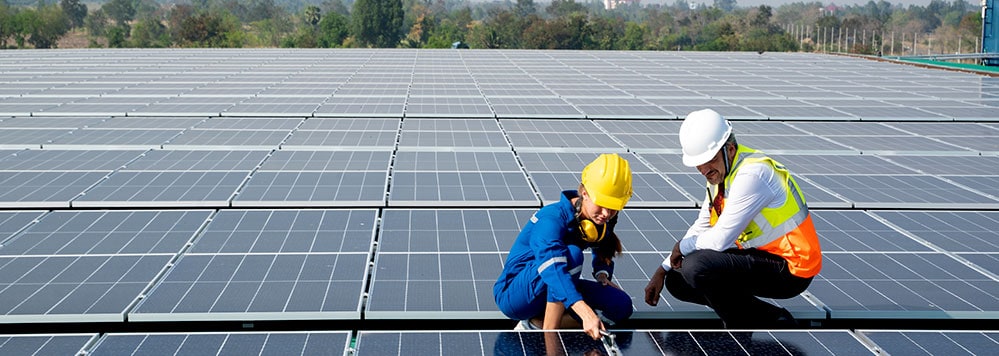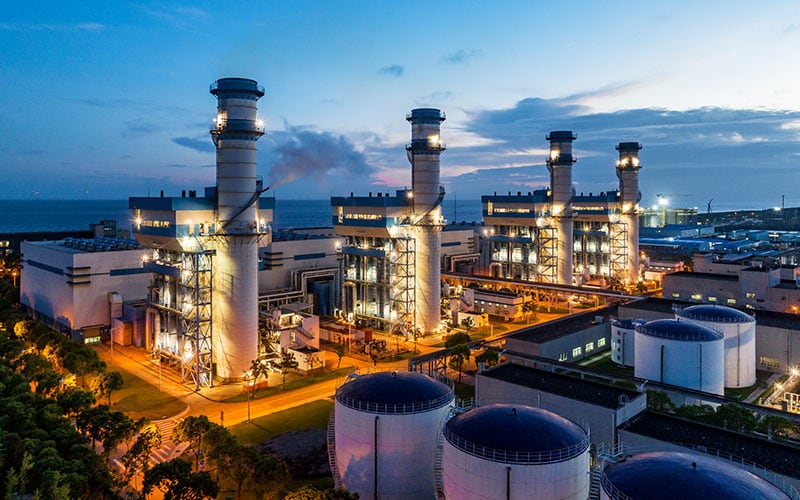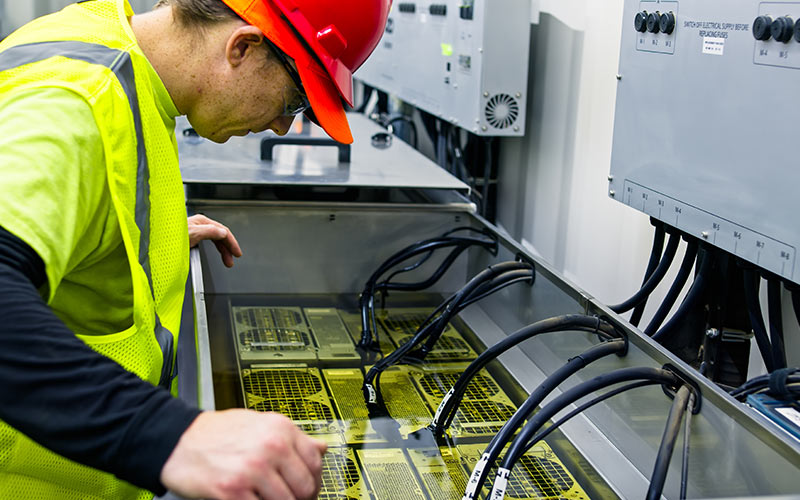Insights
- At least 699 of the world’s 2,000 largest publicly traded companies have committed to become carbon net-zero or adopt a similar standard.
- Companies can benefit from a robust framework that allows them to evaluate and report their whole-life carbon as part of their sustainability efforts.
- Organizations should rely on carbon offsets carefully and strategically, after cutting current emissions.
- Well planned carbon offset programs often invest in reforestation, renewable energy projects, and engineered carbon removal innovations.
- In addition to environmental benefits, carbon offset projects can contribute to social good.
- Companies should watch for issues such as “additionality” and emissions “leakage” that can lead to accusations of greenwashing.
Dire warnings and hope
The United Nation’s COP26 summit, held in Glasgow at the end of 2021, issued dire warnings about failure to meet the Paris Agreement climate change goals. At the same time, this critical gathering of world leaders offered hope through new environmental commitments, from carbon trading to phasing out coal. To avoid climate change’s worst impacts, the U.N. determined that 2030 CO2 levels must be 45% lower than they were in 2010, and that the world needs to reach net-zero by mid-century.1
Enterprises need new business models that promote circularity, reuse of buildings and materials, whole life cycle thinking, high-performance operations, and ultimately, a shift away from fossil fuels.
Getting the sequence right — An integrated approach to net-zero
Virtually all large enterprises are trying to lower their emissions, and a substantial minority have agreed to set ambitious climate-related goals. The nonprofit Net Zero Tracker reports that 699 of the 2,000 largest publicly traded companies have committed to achieve a balance between their emissions produced and emissions taken out of the atmosphere, net-zero, or a similar standard.2 At least 235 cities and 128 countries have also made similar commitments.
When addressing their carbon footprint, organizations focus primarily on operational carbon, which accounts for a majority of building-related emissions. Responsibility for embodied carbon — emissions associated with building construction and end-of-life disposal — is pushed down the road. Although it’s a smaller impact, these activities still account for 10% of the world’s energy-related CO2 emissions.
Companies need a robust framework that can evaluate and report whole-life carbon as part of a serious sustainability plan. The right framework can show organizations the required steps and sequencing of efforts needed to decarbonize or offset emissions.3 The framework below illustrates how an organization can balance savings and continuously reduce operational and embodied carbon (see Figure 1).
Figure 1. Framework for sequencing decarbonization efforts

Source: Infosys
Early steps, such as the use of renewable energy and creating more efficient systems, can show quick results. That gives an organization additional time to understand and revise their thinking about how to use space more effectively and reduce the need to build more structures. The creation of certified carbon offsets should be the final steps — close the gap left when all other efforts are maximized.
Understanding and managing carbon offsets
Early efforts to reduce greenhouse gas (GHG) emissions can be relatively straightforward for some enterprises — they can for example purchase renewable energy, or switch to electric vehicles. Then comes the more difficult matter of addressing embodied carbon and seeking ways to cut emissions in areas where affordable solutions don’t yet exist.
Carbon offsets fill those gaps effectively but only when used carefully and strategically (see Figure 2). A carbon offset reduces GHG emissions elsewhere or increases carbon storage or sequestration. Organizations can buy or sell credits that are certified by governments or independent bodies. These credits represent an emission reduction of one metric ton of CO2, or an equivalent amount of other GHGs.
Figure 2. Benefits of carbon offsets

Source: Infosys
Companies and products are called climate-neutral when their unavoidable CO2 emissions are compensated through internationally recognized carbon offset projects. This process is defined in the Kyoto Protocol as the clean development mechanism and is based on the scientific understanding that GHGs are distributed evenly in the atmosphere. When addressing climate change, it does not matter where on earth GHG emissions are generated or saved. Therefore, unavoidable emissions in an industrialized country can be compensated by carbon offset projects in developing countries. The quality of these programs and their impacts are assessed through independent assurance agencies or disclosed based on global standards.
Infosys’s biogas and cookstove projects in India generated over 2,400 jobs while benefitting more than 102,000 families
The carbon credits market helps fund valuable, diverse efforts like reforestation, renewable energy projects, and waste treatment facilities (see Figure 3). These offsets also help pay for investments in green technology, such as direct air capture and other engineered carbon removal innovations. A collection of tech giants, including Alphabet and Meta, are using their $925 million Frontier Fund to purchase carbon capture offsets from startups.4 The goal is to help these businesses scale their technology and drive down the price to remove carbon from the atmosphere.
Figure 3. Types of carbon offsets

Source: Infosys
Companies need to adopt sustainability to not only save their reputation but also to handle economic, environmental, and social issues effectively
In addition, organizations can often create greater social and environmental benefits when the projects are implemented in developing countries, where gross domestic product is low and CO2 emissions are increasing. Infosys took this approach when it funded biogas and efficient cookstove projects in rural India.5 Besides helping us become carbon neutral in 2020, the efforts created more than 2,400 jobs, directly benefitted more than 102,000 families, lowered GHG emissions, and reduced indoor air pollution.
How to deliver an effective carbon offset program
These factors make buyers susceptible to reputational risks from accusations of greenwashing.
- Additionality is essential to the quality of carbon offset credits. This means that the GHG reductions would not have happened without those credits.
- The performance of the program’s output must be measured through precise monitoring and verification. This allows the buyer to accurately evaluate the benefits of the carbon credits.
- Leakage of the emissions — or shift of emissions to a different area — is a common challenge for the offset program. Companies must design their strategies in ways that avoid emission leakage and double claiming. A failure in this area can raise concerns about greenwashing and pose reputational risks.
- The program and the carbon offset credits are verified and validated by independent accredited third parties and certified by standards bodies. This enhances credibility and performance outcomes.
- Carbon offset projects add sustainable impacts to local communities and the environment. Carbon offsets were created to reduce GHG emissions but can also benefit communities near offset projects. These co-benefits improve social, economic, and ecological outcomes.
Decarbonization was once the purview of the most environmentally advanced companies — ones that embraced sustainability as their primary identity. Now, many of those once niche priorities are mainstream, if not expected. Pressure is building from customers, investors, and regulators to operate in the most sustainable way possible.
Companies must understand that sustainability is no longer a niche concern — it is imperative for the health of the planet and the enterprise. They need to consider not only their reputation to avoid greenwashing accusations, but also, and more importantly, how best to deploy carbon offset projects to tackle economic, environmental, and social issues in an effective and meaningful way.
References
- Net zero emissions: What is it and why does it matter so much?, Megan Rowling, September 23, 2020, World Economic Forum.
- Net zero tracker.
- Net zero carbon buildings: A framework definition, April 2019, UK Green Building Council.
- Stripe, Shopify, Alphabet, Meta and McKinsey will spend almost $1 billion on carbon removal, Heather Clancy, April 13, 2022, GreenBiz.
- Infosys is building sustainable communities under its carbon neutral program, Infosys.





